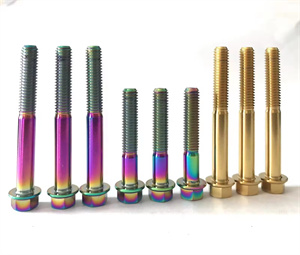Black Oxidation Treatment Of Custom Fasteners
The black oxidation treatment method of Custom Fasteners is a commonly used surface treatment technique to improve the corrosion resistance, wear resistance, and appearance quality of fasteners. The following is a specific introduction to this processing method:
1、 Purpose of processing
Improve the corrosion resistance of fasteners (such as bolts, nuts, etc.).
Enhance the wear resistance of fasteners.
Improve the appearance quality of fasteners to present a uniform black or dark gray color.
2、 Process flow
1. Cleaning and preparation
Remove oil stains, impurities, and oxides from the surface of fasteners.
Use alkaline solution to degrease and clean fasteners, ensuring a clean surface.
2. Rust removal/pickling
If there are rust or oxide stains on the surface of fasteners, rust removal/acid washing treatment is required.
Soak the fasteners in a sulfuric acid solution with a concentration of 10-15%, control the temperature at 70-80 ℃, and the soaking time is usually about 30 minutes (the time can be shortened for lightly rusted parts, and extended for severely rusted parts).
3. Oxidation treatment
Place the rusted/pickled fasteners into a tank containing a strong oxidizing agent for oxidation treatment.
Strong oxidants are generally composed of sodium hydroxide, sodium nitrite, and trisodium phosphate.
Blackening treatment is usually carried out at a low temperature of about 350 ℃, resulting in a dark black color of ferric oxide.
The immersion time is determined by the type of material and the required thickness of the oxide film, generally between 50-80 minutes. High carbon steel with high carbon content has a faster oxidation rate and a shorter immersion time; Low carbon steel with low carbon content has a slow oxidation rate and requires a longer immersion time.
4. Cleaning and drying
After oxidation treatment, thoroughly clean the fasteners with distilled water to remove surface residues and unreacted chemicals.
Dry the fasteners to prevent rusting during subsequent processing.
5. Post processing
According to the needs, apply oil, wax, or paint post-treatment to the oxidized fasteners to enhance their corrosion resistance and wear resistance, and improve their appearance.
6. Inspection
Inspect the processed fasteners to ensure that their surface quality, uniformity of oxide film, and thickness meet the requirements.
3、 Precautions
Choosing the appropriate oxidant and treatment temperature is crucial to ensuring the quality and performance of the oxide film.
Strict control of parameters such as time, temperature, and chemical concentration is required during the processing.
The post-processing steps are crucial for improving the corrosion resistance and wear resistance of fasteners.
